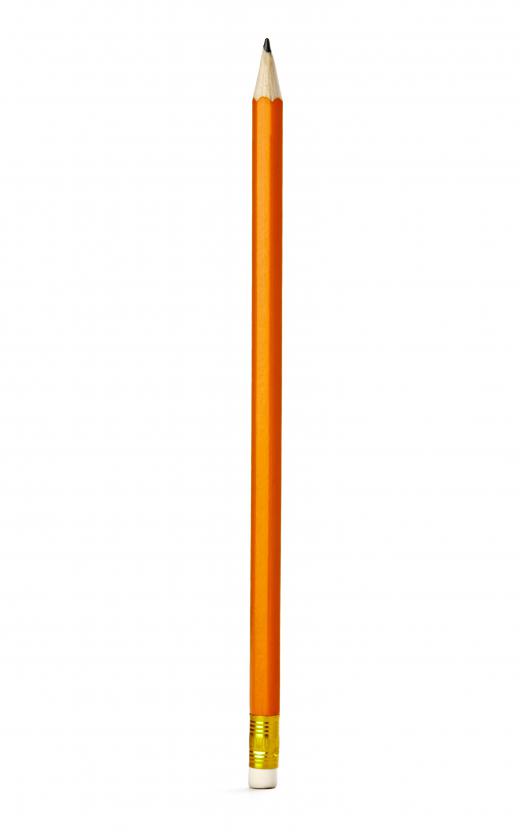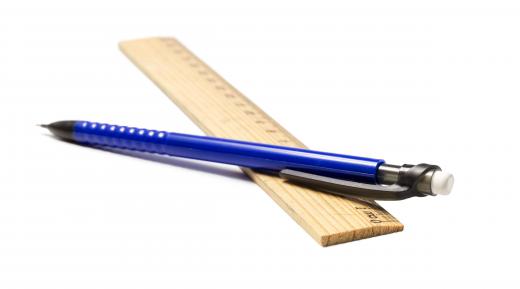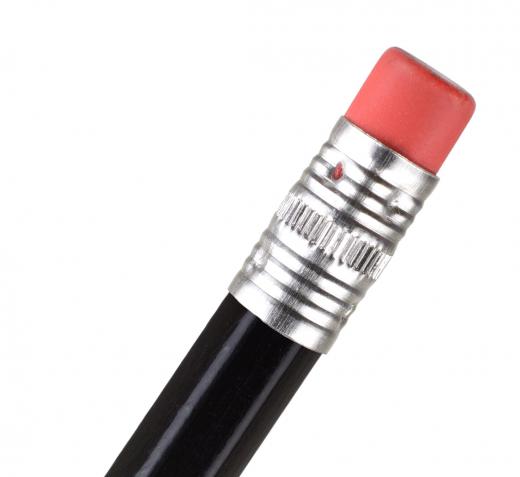Traditional wooden pencils are still manufactured in a process first introduced in the 1600s. Modern woodworking machines and automation methods have definitely streamlined the manufacturing process, but most of those made today's do not vary much from their centuries-old predecessors. Essentially, they are the end result of a sandwiching process involving graphite and slabs of cedar wood.
The first step in making pencils is the preparation of the graphite center, or "lead." Graphite is a dark, soft mineral that is ground and added to clay and water in a mixing chamber. After the water is squeezed out, the remaining graphite/clay compound is allowed to air dry until it becomes a powder again. This graphite powder is mixed once again with water to form a soft paste. The graphite paste is then extruded through thin metal tubes to form pencil-sized rods. These rods are superheated to create hard and smooth leads.

Meanwhile, a woodworking machine slices blocks of cedar wood into thinner slats. Another machine cuts eight grooves across the length of these slats. Pencils are not carved from a single blank, but actually start out as two half-blanks glued together. As the two halves are sandwiched and glued, another machine places a graphite rod on each of the eight shallow grooves. The entire uncut slab is allowed to dry before further processing.

A special cutting machine receives the uncut sandwiches of wood and graphite, then blades trim down the sides to form the familiar hexagonal or round shape. The cutting machine also snaps the slab into individual pencils. Sanding machines smooth out the surfaces and prepare them to receive several coats of paint. It is not unusual for pencils to receive up to eight coats of paint to produce the splinter-free surface necessary for safe use of the product.

The painted pencils then receive a hot-stamp pressing usually containing the manufacturer's name and a number corresponding with the relative hardness of the graphite lead. The most common hardness has a designation of #2, but those with hardness levels up to #4 can often be found in hobby or office supply stores. Hardness generally means how much graphite is released per stroke. The higher the hardness number, the less graphite is released, which results in a lighter line.
The pencils are then fitted with a metal collar known as a ferrule. An eraser made from soft rubber is mechanically inserted into the ferrule and the pencils are now considered complete. Interestingly enough, pieces of bread were often used as erasers until the first rubber erasers were developed around the year 1770. It wouldn't be until 1858 that rubber erasers were actually attached to the ends.

